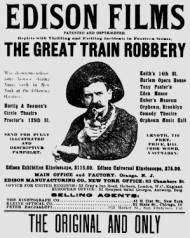
"Sex and Sin" in the Movies
by Melanie Mitchell
The stock market has crashed the year before, movies are beginning to talk, and the Unites States has gone into the great depression. The beginning of the 1930s were full of despair and tragedy as day by day thousands lost their jobs, but in the movie industry it was the gateway to selling “sex and sin”. The ability to bring the people a little happiness in a world of lost hope. The Pre-code Hollywood had no laws dictating what would be acceptable in the movies, as the advancement from silent films to talking films were beginning to make their way in the world. The filmmakers were not holding back on creating movies. The Pre-code Hollywood had no boundaries or ratings that would hold them back, but the moral and ethnics of those working the film sometimes did. The work to censor these movies began with a man hired by the motion picture companies to keep the government out of their business. The code he helped create would not be enforced until June of 1934. Rules and regulation enforcement would not happen until the middle of 1934. Until that time, this was an era to the Jazz age and the most freedom any movie created would have.
Prior to the depression, there were the roaring twenties and the new invention of motion pictures. The work from Thomas Edison and his assistant created the first motion picture camera. This camera would change the nation by allowing people to escape reality or bring the glamorous lives of Hollywood into their lives. However, this would also allow the news to be recorded, but this would later allow the scandals of Hollywood become widely known to the nation. The scandals in the twenties and silent films being created would challenge the morals and ethics of the people, which would create the later to be known Production codes that would censor the movies in the 1930s. While most of us, have always dealt with various censoring in movies, radio, television, arcade games, and music, it was the need to sell “sex and sin” that would begin the censoring of movies. That censoring would later become the rating system of today. However, before the rating system that we have all grown up with, or the Production codes and their enforcement, movies were at their highest level of “sex and sin” freedom.
Early Years

The first feature film created was ten minutes long. But the gateway this would make is a major contribution to the silent film era. The first American film “The Great Train Robbery (1903) ” was only ten minutes long, and with this, film the motion picture industry would erupt. As silent films were making their way across the country and showing people a way to see the world and theater; it help create a escape from the reality of life. Many people were working long hours to have a place to live and eat. Many times their only escape was the movies. As early silent films had no wording in the movie musical scores were added within the movie houses owed by the production companies. Most of the musical attributes were created by piano, organs, and other sound machines to help the audience understand different scenes. Sometimes these films would have full musical scores or narratives for the movie house to use. As advancements in technology and the equipment were becoming more and more common so was the creation of longer films, and the editing that would later allow words to be inputted within the movie so the movie goers would know what an expression is, a location, or a scene being set up with a mood description. Sounds were being added that depict the emotions or physical characteristic of the movie. As time would go on during the silent film era, the films and the scandals of Hollywood would begin making headlines. This would be the beginning of the “sex &sin” that would become the selling point for the movie industry.
As the movie industry progressed in this direction, there were others things going on in the companies. This brought up one major question for the companies, where to show the movies. Movie houses began popping up everywhere. While movies were being created, movie houses were being built across the nation, but with one problem. They were each owned by a single motion picture company. Each building would only show the movies created by their motion picture company. When Warner Bros. had a new movie, the people would have to go to the Warner Bros. cinema to view it. A monopoly was being created within the motion picture industry.
Movie houses owned by the motion picture companies were showing movies that challenged the morals and ethics of the people. Scandals of Hollywood were making their way across the nation’s papers. In Hollywood, several murders would happen to make the people see how the morals and ethics of the Hollywood was affecting the people. With the unsolved murder of film director William Desmond Taylor , the three trials of Roscoe Conkling ("Fatty'') Arbuckle being involved in the rape-murder of a woman, the suicide of Olive Thomas , people were beginning to see that there were no morals and ethics in Hollywood and a demand from the government to do something began to spread across the nation.
To keep from having government intervention all the motion picture companies got together and decided to hire someone to monitor the movie productions to ensure morals and ethics were of the most important thing to the industry. A board was created with the head being a man with a background of working in the government that would hopefully placate the people. As such, began the establishment of Motion Picture Producers and Distributors of America and leading this group, funded by the motion picture industry, would be Will H. Hays.
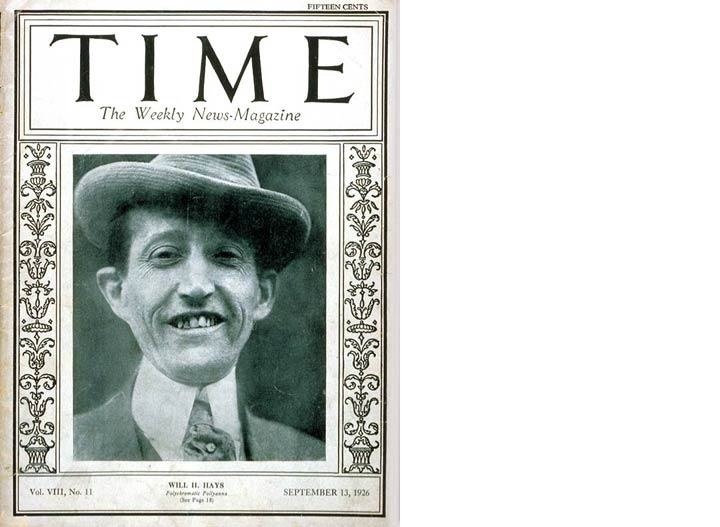
Who Was Will H. Hays?
As first president of the Motion Picture Producers and Distributors of America, Will H. Hays will make many changes to Hollywood, in order to keep the government from regulating the industry. Hays did not work in the movie industry when he took the position. He was working on a distinguish political career most notably known for his work as the Chairman of the Republican National Committee and working in the President Harding cabinet as the US Postmaster General . Hays was chosen by the motion pictures companies for his strong beliefs of obscene material being sent through the mail. This is ideally what the motion pictures were looking for, so the people in the nation could see that a former member of the President’s cabinet would be overlooking the film industry. To ensure that only morally and ethically correct films would be created and shown to the masses. Hays would create “The Don’ts and Be Careful ” list in 1927 that was used for self-regulation. From this Hays will agree to the original Production Code created by Father Daniel Lord in 1930 that would later be enforced with changes by Joseph Breen in 1934. Until the enforcement in 1934, the motion picture industry listened to what Hays had to say, but continued selling the “sex and sin.”
Motion Picture Producers and Distributors of America
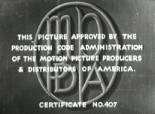 Motion Picture Producers and Distributors of America (MPPDA) would have its first president to reside over them, a man whose political background would give the industry a significant advantage. He would help ward off the government from interfering in the industry. Thus, he prevented censoring in the movies by creating an association that would self-censor the movies. Will H. Hays, was the man for the job. He would become the poster boy for the industry, showing that his strong protestant values would help create a moral and ethic environment. At the beginning with the industry Hays watched how things were being done and then began making suggestions that would began to make films morally and ethically correct for the nation. His first idea would be to create movies that would not require censoring. These films would be created to be educational and while they were making these films, the industry could make changes concerning the theaters on Saturday mornings. With this plan there would be early morning showing for the young boys in the area. Making the entrance fee cheaper than normal meant it would remove them off the streets. The educational films would then be teaching the young boys, but also prevent these boys from getting into trouble. As Hays would progress within the industry he would create the “The Don’ts and Be Careful” list in 1927. This list would give the basic outline to what would be accepted, however it was up to interpretation as there was little description to what would be or not be accepted. The Don’ts and Be Careful list:
Motion Picture Producers and Distributors of America (MPPDA) would have its first president to reside over them, a man whose political background would give the industry a significant advantage. He would help ward off the government from interfering in the industry. Thus, he prevented censoring in the movies by creating an association that would self-censor the movies. Will H. Hays, was the man for the job. He would become the poster boy for the industry, showing that his strong protestant values would help create a moral and ethic environment. At the beginning with the industry Hays watched how things were being done and then began making suggestions that would began to make films morally and ethically correct for the nation. His first idea would be to create movies that would not require censoring. These films would be created to be educational and while they were making these films, the industry could make changes concerning the theaters on Saturday mornings. With this plan there would be early morning showing for the young boys in the area. Making the entrance fee cheaper than normal meant it would remove them off the streets. The educational films would then be teaching the young boys, but also prevent these boys from getting into trouble. As Hays would progress within the industry he would create the “The Don’ts and Be Careful” list in 1927. This list would give the basic outline to what would be accepted, however it was up to interpretation as there was little description to what would be or not be accepted. The Don’ts and Be Careful list:
1.Pointed profanity-by either title or lip-this includes the words "God," "Lord," "Jesus," Christ" (unless they be used reverently in connection with proper religious ceremonies), "hell," "damn," "Gawd," and every other profane and vulgar expression however it may be spelled;
2. Any licentious or suggestive nudity-in factor in silhouette; and any lecherous or licentious notice thereof by other characters in the picture;
3. The illegal traffic in drugs;
4. Any interference of sex perversion;
5. White slavery;
6. Miscegenation (sex relationships between the white and black races);
7. Sex hygiene and venereal diseases;
8. Scenes of actual childbirth-in fact or in silhouette;
9. Children's sex organs;
10. Ridicule of the clergy;
11. Willful offense to any nation, race or creed;
Within the initial eleven items there was another list that includes things that should be handled carefully. These range from the use of a nation’s flags, to criminal behavior and the justice or injustice received for criminal behavior. Within this same list is the manner of how women will be portrayed. There would also be the concern of the institution of marriage and all bedroom scenes should not have the men and women in the same bed.
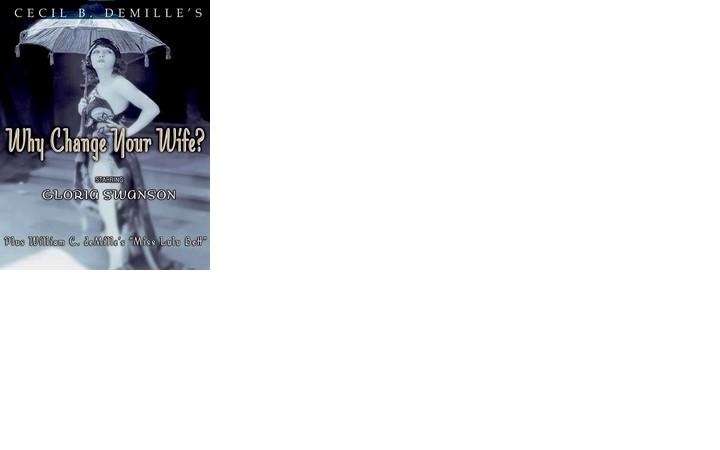
Even with Hays ideas and the people seeing the poster boy for the MPPDA did give the people the satisfaction that the morals and ethics within the industry would indeed change. How wrong they were to believe this, the movies were only going to get dirtier before they would get clean. Even with the MPPDA trying to mediate what was produce, the directors had other ideas. Once again “sex & sin” would show up in the movies, but also within the advertisements for these movies. These movies were depicting women who were barely covered; scenes of sexual desire and sins that would condemn a person were being shown on the posters and within the movies. While these ideas may not be a shock in today’s society, they were in the 20s and 30s. An example of a movie poster depicting a woman barely covered is “Why Change your Wife? ” This movie had many elements that would go against what would be considered morally and ethnically acceptable during the 1920s. This movie shows a marriage failed and ends in divorce, adultery with the husband, exposure of the woman form with the clothing and bathing suit in the film.
Changes in the Industry
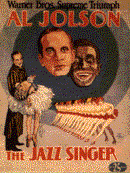 The use of color in film was making its way across the industry, but a new addition to the way films are create would begin to revolutionize the industry. Films were creating full length musicals and the length of film was increasing as advancements were being made. As talking in films made its way across the industry, the cost of getting this equipment would cause many production companies to be close to hitting bankruptcy. Most companies were willing to go negative to get the equipment as it would be the leading vision of advancing in the industry. However, this would have detrimental results, as the year of 1929 would forever be remembered.
The use of color in film was making its way across the industry, but a new addition to the way films are create would begin to revolutionize the industry. Films were creating full length musicals and the length of film was increasing as advancements were being made. As talking in films made its way across the industry, the cost of getting this equipment would cause many production companies to be close to hitting bankruptcy. Most companies were willing to go negative to get the equipment as it would be the leading vision of advancing in the industry. However, this would have detrimental results, as the year of 1929 would forever be remembered. 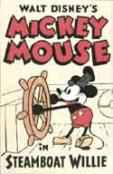 Prior to this, there will be new movies that had music, talking and sounds that would peak the interest of the people and the thoughts of “sex and sin” would always be the selling point to these movies.
Prior to this, there will be new movies that had music, talking and sounds that would peak the interest of the people and the thoughts of “sex and sin” would always be the selling point to these movies.
The first film to be part-talkie would be created by Warner Bros studio “The Jazz Singer ” in 1927 and they would later release the first full length talking film “Lights of New York (1928)” which was a gangster film. But these were not the only changes the people would see. Walt Disney would create the first speaking cartoon “Steamboat Willie ” in 1928. Even with all these changes and advancements it would not help save the companies that have gone negative from purchasing the new technology from the downfall of the Stock Market Crash.
The Depression and the Production Code
At the start of the Depression, many people were in shock over what had just happen and were looking for the escape. The movies provided this escape from the doom and gloom outlook that was plaguing the country. The movie industry would not escape the Depression and many of the production companies would not survive. And those companies that would profit from the lost of these companies will continue making “sex and sin” selling films.
Movies would only get worse before they would begin to get better, but it was not for all movies as the self-censoring that mediated the industry would be used by various actors, directors and producers. However, for the most part movies would be at their highest level of freedom before there would become a strict enforcement of the Production Code that would govern the industry until 1968. Until this enforcement, there will be changes to this code, from its original to the revise version that would be enforced in 1934.
The Production Code written by Father Daniel Lord was accepted by Will H. Hays and would go into effect on March 31, 1930. This code would take the place of the “The Don’ts and Be Careful” list, but would not be truly enforce until 1934. In the mean time the code gave specific details as what would not be allowed within the movies. This range from the criminal behaviors and ensuring, that they would always be punished regardless if it is based upon a true event. As well as nudity scenes would not be allowed unless it would be absolutely necessary to the plot of the movie. Dancing that representing sexually actions that would represent sexually acts. While there were many more items on the Production Code, they each would govern every aspect of the movies and what would be allowed. But until 1934 they would be ignored by the majority of motion picture companies. Movies would continue to show “sex and sin” but they would begin to advertising the “sex and sin” that was in the motion picture.
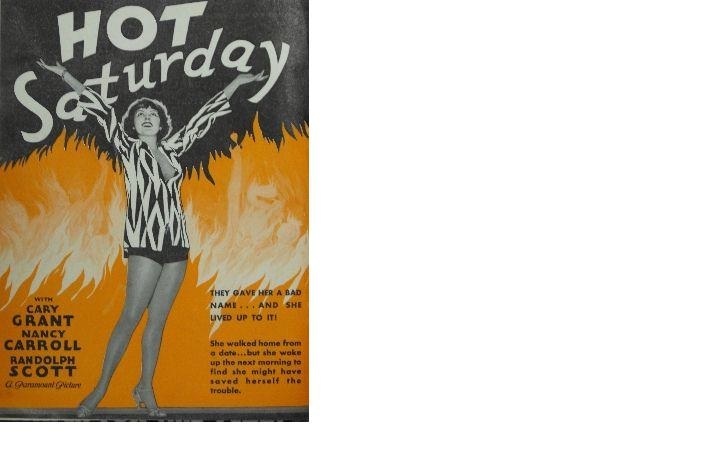
Movies titles would begin to get risqué, but the movies would focus on the criminal behavior and the marriage or failure of marriage. “Hot Saturday ” would victimize the main character by questioning her virtue of sleeping with a known “womanizer” in her little town. Scenes in this movie went strictly against the code as they depicted woman virtues that were being questioned and the end result being that she would accept the scandal and make it true.
With the movie industry making changes with its technology and screen plays, it would be most risqué that this era would ever see. While they may not seem to be risqué compared to movies of today, they were beyond what would be acceptable during the Depression. The movies during the early years will forever be remembered to guide the hand of the people to fight for the censoring that would later become the system that we use today. Censoring may have expanded beyond the movies, but the original censor will forever be remembered as the Hay’s Code.
Bibliography